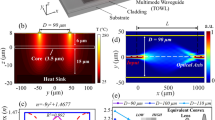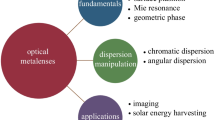Abstract
Presbyopia is a ubiquitous age-related disability of the eye, affecting an estimated 1.04 billion people worldwide, reducing their ability to focus on nearby objects. The various solutions to this inevitable vision deterioration are not compromise-free, with a growing need for approaches beyond conventional spectacles. The research motivation for this work is the unique solution offered by liquid crystal (LC) contact lenses to create compromise-free vision across the whole field of view. The distinctive property of LC lenses is that they are switchable, with the application of a voltage activating the lens. The change in focal power is facilitated via a voltage-dependent change in refractive index of the LC. We have successfully demonstrated several versions of electrically switchable LC contact lenses with variable additional optical power of up to +3.00 D, ideal for the correction of presbyopia.
This paper offers a review of the optical and electro-optical performance recently demonstrated for the different modes of operation realized in nematic systems, including planar (homogeneous) and vertically aligned (homeotropic) aligned devices. The change in optical power obtained depends on the choice of geometry and LC material. A material with higher birefringence allows a thinner LC-lens layer to achieve a particular focal power. In the homeotropic geometry, the refractive index of the LC layer is a minimum in the ‘off’ state (ordinary refractive index, no) and the mode is polarization-independent, offering a significant advantage over planar lens designs. The construction is also simplified as only one alignment layer needs to be rubbed. Depending on the geometry used, continuously variable changes in focal power of up to +3.00D have been achieved. The response time of the lenses can be better than half a second, achieved with small applied voltages of ~7Vrms.
A further important stage in the optimization of the contact lenses is the inclusion of graphene as the electrodes. Conventional ITO electrodes are too brittle for these flexible optical systems. The paper also reviews the successful incorporation of graphene into the lenses, with excellent optical and electro-optical results. The device demonstrates the huge potential of graphene in an unconventional liquid crystal device geometry that includes curvature over a relatively large area.
Similar content being viewed by others
References
B. A. Holden, T. R. Fricke, S. M. Ho, R. Wong, G. Schlenther, S. Cronje´, A. Burnett, E. Papas, K. S. Naidoo and K. D. Frick, Arch. Ophthalmol. 126 (12), 1731–1739 (2008).
H. E. Milton, P. B. Morgan, J. H. Clamp and H. F. Gleeson, Optics Express 22 (7), 8035–8040 (2014).
H. E. Milton, H. F. Gleeson, P. B. Morgan, J. W. Goodby, S. Cowling and J. H. Clamp, Proceedings of SPIE 9004, 900401–900406 (2014).
I. M. Syed, S. Kaur, H. E. Milton, D. Mistry, J. Bailey, P. B. Morgan, J. C. Jones and H. F. Gleeson, Optics express 23 (8), 9911–9916 (2015).
S. Kaur, Y. J. Kim, H. Milton, D. Mistry, I. M. Syed, J. Bailey, K. S. Novoselov, J. C. Jones, P. B. Morgan, J. Clamp and H. F. Gleeson, Optics Express 24(8) DOI:10.1364/OE.24.008782 (2016)
S. Bae, H. Kim, Y. Lee, X. Xu, J. S. Park, Y. Zheng, J. Balakrishnan, T. Lei, H. R. Kim, Y. I. Song, Y. J. Kim, K. S. Kim, B. Ozyilmaz, J. H. Ahn, B. H. Hong and S. Iijima, Nature nanotechnology 5 (8), 574–578 (2010).
P. Blake, P. D. Brimicombe, R. R. Nair, T. J. Booth, D. Jiang, F. Schedin, L. A. Ponomarenko, S. V. Morozov, H. F. Gleeson, E. W. Hill, A. K. Geim and K. S. Novoselov, Nano Lett. 8 (6), 1704–1708 (2008).
T. Scharf, J. Fontannaz, M. Bouvier and J. Grupp, Mol. Cryst. Liq. Cryst. (Phila. Pa.) 331 (1), 235–243 (1999).
A. Y. Gvozdarev, G. Nevskaya and I. Yudin, J. Opt. Tech. 68, 682–686 (2001).
J. S. Patel and K. Rastani, Opt. Lett 16 (7), 532–534 (1991).
Author information
Authors and Affiliations
Rights and permissions
About this article
Cite this article
Gleeson, H.F., Kaur, S. Liquid crystal contact lenses with graphene electrodes and switchable focus. MRS Advances 1, 3509–3515 (2016). https://doi.org/10.1557/adv.2016.467
Published:
Issue Date:
DOI: https://doi.org/10.1557/adv.2016.467




